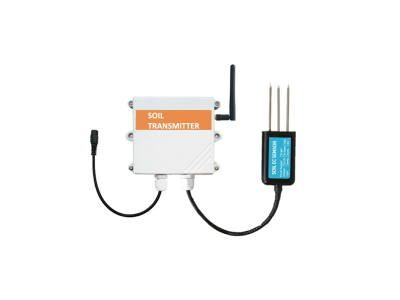Precision farming has emerged as a game-changer in the agricultural industry, offering unprecedented opportunities to optimize resource usage, increase productivity, and minimize environmental impact. A crucial component of precision farming is soil sensor technology, which enables farmers to harness the power of real-time data on soil conditions. This article explores the significance of soil sensors in enhancing precision farming practices, their various applications, and the transformative impact they have on resource management and sustainable agriculture.
The Role of Soil Sensors in Precision Farming:
1.1. Real-time Data Collection: Soil sensors provide accurate and real-time data on essential soil parameters such as moisture levels, temperature, pH, nutrient content, and salinity. This information allows farmers to make data-driven decisions regarding irrigation, fertilization, and other agronomic practices.
1.2. Site-specific Management: Soil sensor technology empowers farmers to implement site-specific management strategies by monitoring soil conditions at various locations within their fields. This approach helps optimize input application, reducing waste and improving resource utilization efficiency.
1.3. Early Problem Detection: Soil sensors enable early detection of issues such as nutrient deficiencies, pest infestations, or water stress. By identifying and addressing these problems promptly, farmers can prevent yield losses and minimize the need for corrective measures.
1.4. Data Integration and Analysis: Soil sensor data can be integrated with other agricultural data sets, such as weather patterns, crop growth models, and satellite imagery. This integration provides a comprehensive view of the farm's ecosystem, enabling informed decision-making and proactive management strategies.

Components and Types of Soil Sensors:
2.1. Soil Moisture Sensors: These sensors measure the amount of water present in the soil. They can be installed at different depths to monitor moisture availability throughout the root zone. Soil moisture sensors help optimize irrigation scheduling, avoid overwatering or drought stress, and enhance water use efficiency.
2.2. Soil Temperature Sensors: Temperature sensors monitor soil temperature, which influences seed germination, plant growth, nutrient availability, and microbial activity. By understanding soil temperature patterns, farmers can optimize planting schedules and improve crop performance.
2.3. Nutrient Sensors: These sensors measure soil nutrient levels, including nitrogen, phosphorus, potassium, and other essential elements. Nutrient sensors provide valuable insights into the soil's fertility status and help farmers apply fertilizers precisely, minimizing excess usage and potential environmental pollution.
2.4. pH Sensors: pH sensors measure the acidity or alkalinity of the soil. Soil pH affects nutrient availability and microbial activity, influencing plant growth and yield. Monitoring soil pH with sensors empowers farmers to adjust pH-related inputs and amendments for optimal crop performance.
2.5. Electrical Conductivity Sensors: Electrical conductivity sensors measure the soil's ability to conduct an electrical current, which correlates with soil salinity levels. Monitoring soil salinity is crucial for managing salt-affected soils and selecting suitable crops for specific areas.
Transformative Impact on Precision Farming Practices:
3.1. Resource Optimization: Soil sensors enable precise irrigation scheduling, ensuring water is applied only when necessary. This optimization minimizes water waste, reduces energy consumption, and enhances water use efficiency.
3.2. Fertilizer Management: With real-time data on soil nutrient levels, farmers can tailor fertilizer applications based on crop requirements. This approach avoids under or over-fertilization, reducing nutrient losses and optimizing nutrient use efficiency.
3.3. Yield Enhancement: By monitoring soil conditions and responding promptly to stress factors, farmers can optimize crop yield potential. Soil sensors facilitate timely interventions, such as adjusting irrigation or applying targeted treatments, resulting in improved crop productivity.
3.4. Environmental Sustainability: Precision farming practices supported by soil sensors help minimize environmental impact. By optimizing resource usage, reducing chemical inputs, and preventing nutrient runoff, farmers can contribute to sustainable agricultural systems and protect natural resources.
3.5. Economic Benefits: Soil sensors provide valuable insights into crop health and growth patterns, allowing farmers to make informed decisions regarding inputs and management practices. This optimization helps maximize profitability and reduce input costs, leading to economic benefits for farmers.
Advancements in Soil Sensor Technology:
4.1. Wireless Sensor Networks: Integration of soil sensors with wireless networks enables seamless data collection and transmission a






